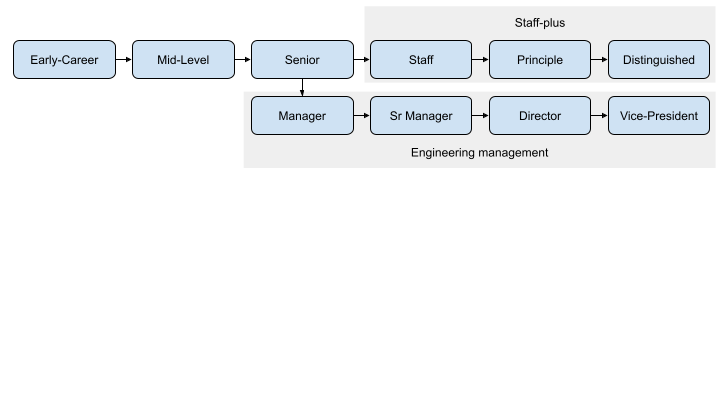 Staff Engineer: Leadership Beyond the Management Track by Will Larson
Staff Engineer: Leadership Beyond the Management Track by Will Larson
My rating: 4 of 5 stars

Staff-plus roles split into these common archetypes:
- Tech lead – guiding the approach of a particular team (or two) with complex tasks, coordinating and unblocking.
- Architect – responsible for the success of specific technical domains by setting direction, defining quality and approach within an area. Combining in-depth knowledge of technical constraints and user needs. This is not the toxic preconception that architects design and pass on to others to implement, in staff-plus roles this is more about influence.
- Solver – finding solutions to challenging problems. Either assigned for a short period (hot spot fixer) or longer. Problems already prioritised. Common in companies that think of individuals rather than teams in terms of planning and ownership.
- Right hand – provide additional bandwidth for a leader borrowing some of a leader’s scope and authority to operate. Tend to dive into a fire, edit the approach and delegate the execution to jump to another fire. You always work on essential problems but move on before they have actually been solved.
It is quite common for people without the staff-plus title acting in many of the staff-plus archetypes – being a staff-plus role is a mix of the acting in the archetype, the behaviours, the impact and the organisation recognising these things.
What do staff-plus engineers do?
- Setting the technical direction – effectively a part-time product manager for technology by understanding and solving real needs of the organisation, less about prioritising technology and approaches you are personally passionate about.
- Mentorship and sponsorship – growing leaders around you to help the organisation improve its problem solving abilities.
- Providing engineering perspective in decision making – decision making needs to balance efficiency and effectiveness, here a staff-plus engineer can help provide valuable inputs representing all the engineering interests.
- Exploration – this can be an ambiguous important problem that the company is ill-shaped to address.
- Being glue – doing the needed but often invisible tasks to keep the team moving forward and shipping its work.
The environment staff-plus engineers work
- Complex and ambiguous – the sort of work tends to be poorly scoped, complex and important. From broad, unclear (and potentially wrong) statements the identification of a concrete approach that works will be needed
- Numerous and divided stakeholders – problems might have neither alignment around the problem nor the solution. Management might see this as critically important but engineers feel it is fine as is. It could be agreed that it is a problem but with disagreements about the approach that should be taken.
Named bet where failures matter – it is going to be sponsored by a senior leader, the work staff-plus engineers do will likely be widely communicated. This means that success or failure will be highly visible – as such failing well (early, with learning, appropriate level of risk) is a critical skill.